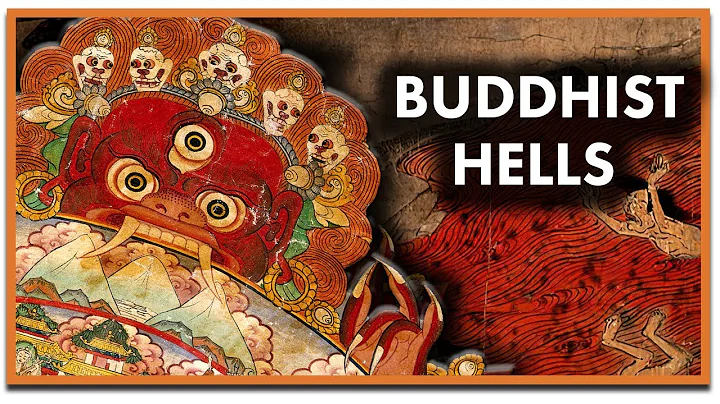At first thought this book was difficult to understand, after all, I knew nothing about Buddhist culture before.
After reading this book, I found it was surprisingly easy to understand.

I thought it would be about some very profound and obscure content like Buddhist Zen.
It turns out that the words in the book are easy to understand, and the story is strong. Although there are many classics quoted, it can be easily understood because of the vernacular explanation.
Author Qian Wenzhong tells the distant and strange stories vividly and down-to-earth, leading readers to understand the legendary stories and Buddhist culture of the Buddha's life with the current perspective.

From the content of the book, we can see that
is called Buddha or Siddhartha of Shakyamuni. From birth, growth, marriage, to becoming a monk and practicing, attaining enlightenment and spreading the Dharma, to Nirvana.
has ups and downs, some myths and legends, and quotations from the original text of Buddhist scriptures.

In addition to Siddhartha's own life, there are also stories about his parents, wife, children and brothers in the book, and the plot of the competition to recruit brides is very surprising.
allows readers to not only see magical and bizarre characters, but also learn about Buddhist cultures such as the basic doctrines of Buddhism, thereby resolving life confusion and benefiting from it.

The book talks about Siddhartha's birth, which is very mythical. There are also sad parts in the auspicious joy of the birth of the prince. That is, Buddha's mother died seven days after he was born.
Siddhartha was raised by his mother's sister, that is, his aunt. When Siddhartha left home, he also left his aunt with garland .
also said goodbye to his wife and said, "Life in the world, love will be separated."
was also confused when he saw this. Since birth, old age, sickness and death cannot be surpassed, why not cherish time and accompany the loved ones?
When I saw this, I thought of the story of Jigong , abandoning my family and even disregarding my old mother's safety.

From the content of the book, it is known that Buddhism talks about eight sufferings , birth, old age, sickness and death, and the four sufferings of resentment and hate, love separation, seeking and not getting, and the five aggregates.
Five aggregates refer to "the deep truth that cannot be obtained."
Five aggregates refers to the five compositions of a person, color (matter), feeling (feeling, feeling), thinking (rational activity), action (man's will activity), and consciousness.
"Take refers to a stubborn and difficult-to-get from deep-rooted desire."
"Once a person has the five aggregates, all suffering will arise."
Perhaps Siddhartha chose to become a monk to practice in order to get rid of the root of suffering and eliminate greed.
Because the Buddha also advocates the "original theory", "He believes that everything in the world is interconnected, interdependent, and mutually conditioned."

"There are many principles in the Buddhist scriptures, and there are many philosophical discourses with very exquisite thinking and very rigorous logic. However, the Buddhist scriptures are by no means abstractly speaking, but mainly through skillful convenience and metaphorical teachings. In other words, various stories are used to guide everyone to understand, think and understand Buddhism..." The content of the book is the same. Through the Buddha's story, readers can understand the truth behind it by themselves.
After becoming a monk, Siddhartha abandoned the glory of the past alone, and gave up all the entertainment and embarked on a long road to seeking the Tao.

He asked for advice many times, trying to find practitioners who became monks earlier than him to learn wisdom, and practiced with asceticism. Later, he found that blindly asceticism could not escape the pain, and then embarked on the path of Bodhi. It is necessary to realize that oneself does not need to be afraid of joy, and to break the inner demons such as love and pain, ignorance, greed, sin, impermanence, impurity, sorrow and happiness, and thus move towards the path of happy meditation.

From this process, in addition to seeing Siddhartha abandoning his restraints, strong personal will, pursuing the persistence of faith, and thinking enlightenment.
Buddhism originated in India and is one of the world's major religions. There is almost no Buddhism with strong exclusivity and inclusiveness. It advocates the worldly mindset to do things that are worldly. The author says it is an education that purifies the mind.

is also right. I have heard of those words such as compassion and life is impermanent. But some of the philosophical views in the book are quite reasonable.







![[English] Who Am I - Lecture 1 - Ven. Guan Cheng - DayDayNews](https://i.ytimg.com/vi/KU0fUs2It5o/hq720.jpg?sqp=-oaymwEcCNAFEJQDSFXyq4qpAw4IARUAAIhCGAFwAcABBg==&rs=AOn4CLDFpQUN_QwRfC7bmP4sUadq-RcYdg)
![A Moving Masterpiece 清明上河图 [English narration] - DayDayNews](https://i.ytimg.com/vi/kxff-4GktOI/hqdefault.jpg?sqp=-oaymwEcCOADEI4CSFXyq4qpAw4IARUAAIhCGAFwAcABBg==&rs=AOn4CLBtHGLeUpJNCYDJYnZTuISQ1N5Vag)


